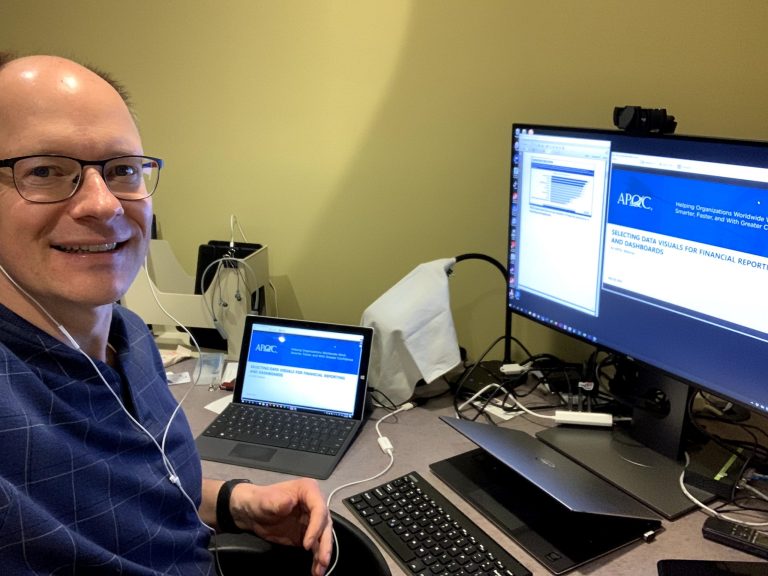The Strengths of a Handshake Culture: Building Trust and Connection
A handshake culture holds immense value in personal and professional spaces. This simple gesture can convey trust, respect, and agreement.
In many societies, the handshake is more than a greeting. It is a symbol of mutual respect and understanding. A strong handshake can break barriers and build connections. It’s a universal sign of goodwill that transcends language and cultural differences.
In business, a firm handshake can set the tone for successful negotiations and partnerships. It shows confidence and establishes a sense of equality. In personal interactions, it fosters a sense of closeness and trust. Embracing a handshake culture can lead to stronger relationships and more effective communication. Let’s explore the key strengths of this powerful practice.

Credit: www.patheos.com
Introduction To Handshake Culture
The handshake is more than a greeting. It’s a symbol of trust and respect. Across cultures, a handshake can communicate more than words. Understanding the handshake culture can give insights into human interactions.
Historical Background
The handshake dates back to ancient times. Warriors would extend their weapon-free hand as a sign of peace. In Greece, it was used to show equality. Over time, it became a common gesture of goodwill. The Romans also used handshakes to seal important deals. It was a way to show honesty and mutual respect. This practice has been passed down through generations.
Modern Relevance
Today, handshakes remain significant. In business, a firm handshake can set the tone for a meeting. It shows confidence and establishes a connection. In social settings, a handshake can create a positive first impression. It bridges gaps between strangers. Even in a world of digital communication, the handshake holds value. It’s a universal gesture that transcends language barriers. Understanding its importance can enhance personal and professional relationships.
Symbolism Of The Handshake
Have you ever wondered why people shake hands? This simple gesture carries a lot of weight. It is more than just a greeting. A handshake symbolizes trust, agreement, and respect. In many cultures, it is an essential part of social interaction. Let’s dive deeper into this fascinating topic.
Cultural Significance
In different parts of the world, a handshake means different things. In Western cultures, it is a common way to greet someone or seal a deal. In some Asian cultures, a handshake may be accompanied by a bow. Here are a few examples:
- Western Countries: A firm handshake is seen as a sign of confidence.
- Middle Eastern Countries: A gentle handshake is preferred to show respect.
- Asian Countries: A handshake may be paired with a bow to show honor.
These variations show how a handshake adapts to cultural norms. It’s fascinating to see how a simple gesture can have so many meanings.
Psychological Impact
A handshake can also have a profound psychological impact. It helps establish connection and rapport between individuals. Imagine meeting someone for the first time. A warm handshake can make you feel welcomed and valued. Here’s why:
- Trust Building: A handshake can signal that you are open and honest.
- Stress Reduction: Physical touch can lower stress levels and create a sense of calm.
- Confidence Boost: A firm handshake can make you feel more confident and in control.
These elements highlight the power of a handshake. It’s not just about physical touch; it’s about creating a positive mental and emotional connection.
In conclusion, the symbolism of a handshake is profound and multifaceted. Whether it’s bridging cultural gaps or fostering psychological well-being, a handshake plays a crucial role in human interaction. Next time you shake someone’s hand, remember the deep meaning behind this simple act.
Building Trust Through Handshakes
Building trust is crucial in any relationship, whether personal or professional. One of the most universal and effective ways to establish trust is through a simple handshake. This gesture, though seemingly small, carries a wealth of meaning. In a handshake culture, the act of shaking hands is not just a formality; it is a powerful tool for building trust and fostering connections.
First Impressions
First impressions are everything. When you meet someone for the first time, a handshake can set the tone for your relationship. A firm, confident handshake conveys strength and assurance. On the other hand, a weak handshake might suggest insecurity or lack of interest. In handshake culture, people understand the importance of this initial gesture. They know that a good handshake can open doors and create opportunities.
Consistent Gestures
Consistency is key. In a handshake culture, people often greet each other with a handshake every time they meet. This repetitive action reinforces trust and familiarity. Think about it: If you shake hands with a colleague every day, you build a bond that goes beyond words. This consistent gesture shows respect and mutual recognition. It’s a simple yet effective way to maintain strong relationships.
Consider these benefits of a handshake culture:
- Enhances Communication: A handshake is a non-verbal way to express yourself. It can communicate warmth, friendliness, and respect.
- Promotes Equality: When people shake hands, they stand on equal ground. It’s a gesture that transcends hierarchy and social status.
- Facilitates Networking: Handshakes are common in professional settings. They help people connect and build networks.
Next time you extend your hand for a handshake, remember its power. This simple gesture can build trust, create bonds, and open doors. It’s more than just a greeting; it’s a foundation for meaningful relationships.

Credit: worldfinancialreview.com
Connection And Communication
Connection and communication are vital in any culture. A handshake culture strengthens these aspects. Handshakes serve as powerful tools for building trust and understanding. They provide a foundation for meaningful interactions.
Non-verbal Cues
Handshakes convey non-verbal cues. They reveal confidence, sincerity, and respect. A firm handshake can establish trust. It shows the other person you are engaged. A gentle handshake indicates warmth and friendliness.
Non-verbal cues can often say more than words. They help us read the emotions of others. This can lead to better communication. Observing these cues can improve relationships. It makes interactions more personal and effective.
Enhancing Dialogue
Handshakes enhance dialogue. They set a positive tone for conversations. A handshake can break the ice. It can make people feel more comfortable. This openness encourages honest communication.
Starting with a handshake can lead to deeper connections. It shows you value the interaction. This can result in more productive discussions. A simple handshake can transform a meeting. It can turn a formal encounter into a friendly exchange.
Handshakes In Professional Settings
In the professional world, a handshake is more than just a greeting. It is a symbol of trust, respect, and connection. A firm handshake can leave a lasting impression, signaling confidence and professionalism. Let’s dive into how handshakes play a crucial role in networking and business transactions.
Networking
Networking events can often feel like a whirlwind of introductions and conversations. Amidst the chaos, a handshake stands out as a universal gesture that can break the ice and open doors. Imagine attending a conference where you don’t know anyone. A simple handshake can be your ticket to starting a conversation. It’s like saying, “I’m here to connect, and I respect your time.”
- First Impressions: A well-executed handshake can make you memorable in a sea of faces.
- Building Rapport: It shows that you are approachable and interested in forming professional relationships.
- Non-verbal Communication: A firm handshake can convey confidence, while a weak one might suggest uncertainty.
When I attended my first networking event, I was nervous. But as soon as I extended my hand for a handshake, I felt an immediate connection with the person I was meeting. It was as if that handshake said, “We are in this together.”
Business Transactions
In the world of business, transactions are often sealed with a handshake. This time-honored tradition signifies mutual agreement and commitment. Whether you are closing a deal or starting a partnership, a handshake adds a personal touch to the otherwise formal proceedings.
- Trust Building: A handshake can reinforce the trust and goodwill between parties.
- Finalizing Agreements: It acts as a physical affirmation of the terms discussed and agreed upon.
- Professional Etiquette: It shows respect and acknowledges the importance of the other party.
Think about the last time you signed a contract. Didn’t that handshake at the end feel like a symbolic seal of approval? It’s a gesture that says, “We’ve got a deal,” in the most human way possible.
In conclusion, handshakes in professional settings are much more than a mere formality. They are a powerful tool for connecting, building trust, and finalizing agreements. So, the next time you extend your hand, remember the strength it carries.
Handshakes And Personal Relationships
Handshakes are more than a simple greeting. They play a vital role in personal relationships. A handshake can convey trust, respect, and a sense of connection. It is a universal gesture that transcends language barriers. In many cultures, handshakes are a significant part of social interactions, strengthening bonds between friends and family members.
Friendship Bonds
Handshakes often mark the beginning of friendships. A firm handshake can make a positive first impression. It shows confidence and openness. Friends use handshakes to greet each other warmly. This simple act reinforces their bond. Handshakes can also be a way to celebrate shared achievements. They signify mutual respect and acknowledgment.
Family Interactions
In many families, handshakes are a way to show respect. Elder family members appreciate a polite handshake. It is a sign of good manners and upbringing. Handshakes can also strengthen family ties. They create a sense of unity and belonging. During family gatherings, handshakes help to bridge generational gaps. They promote harmony and mutual respect.
Challenges And Misunderstandings
Handshakes are a common greeting worldwide, but they can lead to challenges and misunderstandings. Different cultures have unique customs and meanings attached to this gesture. Misunderstandings can arise from these differences, leading to uncomfortable situations. Understanding these challenges is essential for smooth interactions.
Cultural Differences
Handshakes vary significantly across cultures. In some places, a firm handshake shows confidence. In others, it may seem aggressive. A light handshake might be seen as polite in one country but weak in another. The duration of a handshake also matters. Some cultures prefer a quick grip, while others hold on longer. These differences can cause confusion and misinterpretation.
Misinterpretations
A handshake can easily be misread. A firm grip might be seen as assertive. But it can also be seen as rude. A light grip can be taken as a lack of interest. Timing and context also play a role. A handshake at the wrong moment can disrupt a conversation. Understanding these nuances is key to avoiding misinterpretations.
Adapting Handshakes Post-pandemic
The global pandemic has changed many aspects of our lives. One significant change is how we greet each other. Handshakes have long been a symbol of trust and respect. But, the health risks have made many rethink this practice. Adapting handshakes post-pandemic involves new considerations and alternatives. Let’s explore these.
Health Considerations
Health concerns have become a top priority. Handshakes can spread germs and viruses. This is especially true during cold and flu seasons. To stay safe, many people prefer contactless greetings. Regular handwashing and sanitizing have also become essential. These measures help reduce the risk of infection.
Alternative Greetings
Many cultures have alternative greetings that are just as respectful. Bowing is a common practice in some Asian countries. It shows respect without physical contact. The elbow bump has also gained popularity. It is a fun and safe way to greet someone. Another option is the ‘Namaste’ gesture. Pressing palms together while nodding shows warmth and respect.

Credit: ceoworld.biz
Frequently Asked Questions
What Are The Benefits Of A Handshake?
Handshakes build trust, show respect, and create positive first impressions. They also foster connection and convey confidence.
What Is The Power Of A Handshake?
A handshake conveys trust, respect, and confidence. It creates a positive first impression and strengthens relationships.
Is Shaking Hands A Cultural Thing?
Yes, shaking hands is a cultural tradition. It symbolizes greeting, respect, and agreement in many cultures. The practice varies globally.
What Culture Does Not Like Handshakes?
Certain cultures, such as Japanese, prefer bowing over handshakes. Some Middle Eastern countries avoid handshakes between opposite genders.
Conclusion
A handshake culture builds trust and respect in business. It creates strong connections. Handshakes show commitment and mutual understanding. They foster a sense of unity. This simple gesture bridges gaps and strengthens relationships. Embrace handshake culture. It enhances communication and collaboration.
Trust grows. Teams work better together. Businesses thrive. Handshakes are powerful in creating lasting impressions. They leave a positive mark. So, keep shaking hands. It’s a timeless tradition. It’s valuable. It’s essential in today’s world.


